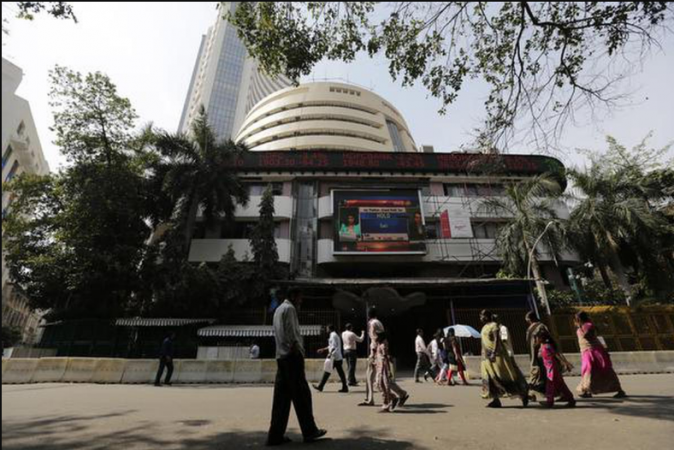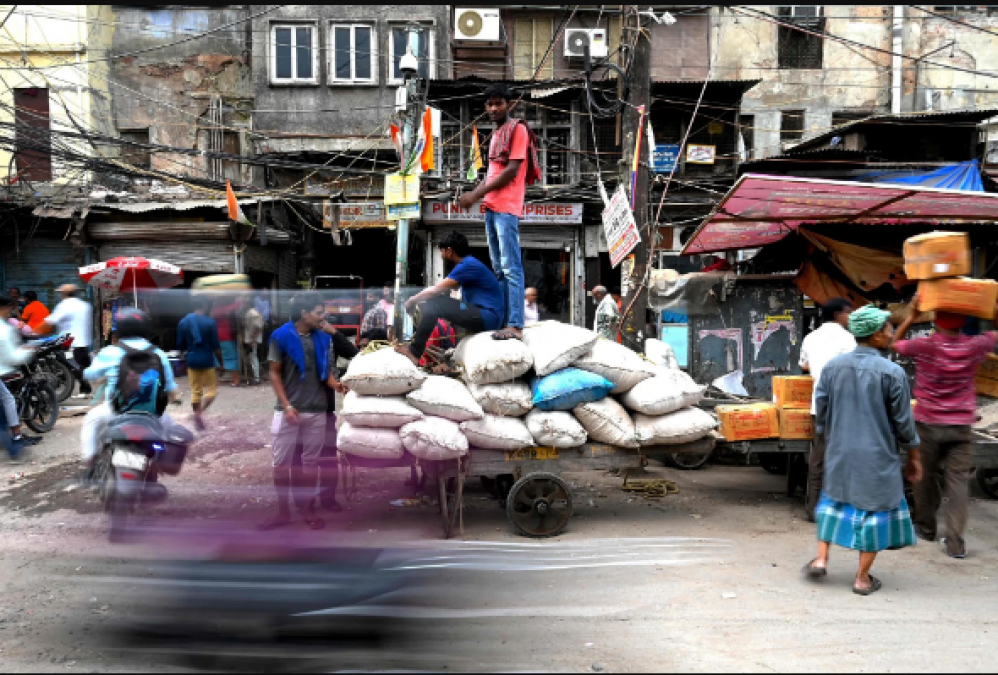
New Delhi: Indians are celebrating after their nation passed former colonial power Britain to become the fifth-largest economy in the world. However, analysts have called for a "reality check," arguing that more needs to be done to combat inequality and unemployment.
Prime Minister Narendra Modi said last week that "the pleasure of surpassing Britain, which ruled over India for 250 years, supersedes the mere statistics of improved rankings... it's special."
According to government data, India firmly established itself in fifth place by posting first-quarter growth between April and June of 13.5%, far outpacing Britain's 0.1% contraction.
According to calculations made by Bloomberg using data from the International Monetary Fund, India's economy had increased to US$854.7 billion as of March, compared to Britain's US$816 billion.
Business leaders also praised India for moving the UK up to sixth place globally in the rankings. The Mahindra Group's billionaire chairman, Anand Mahindra, asserted that "the law of karma" is effective.
Some Indians have also compared their nation's growth to that of China, which only grew by 0.4% in the three months ending in June.
The accomplishment, which coincided with India's 75th anniversary of independence from Britain, places India among the world's top five economies for the first time, just behind the US, China, Japan, and Germany.
The finance minister, Nirmala Sitharaman, stated last week at a business gathering that India was on track to overtake the United States as the third-largest economy by the end of 2029. She said, "Today, fifth; soon, third." In the IMF rankings from ten years ago, Britain was in fifth place and India had the 11th-largest economy.
Despite the "proud moment," which was made even better by the fact that it occurred during India's 75th year of independence, Kotak Mahindra Bank CEO Uday Kotak urged a "reality check."
We have a per-capita gross domestic product of $2,500, compared to $47,000 in Britain. We have a long way to go! Tweeted he. He urged, "Let's get started."
Even then, according to Bibek Debroy, the head of the government's Economic Advisory Council, India, currently categorised as a lower-income country, could only become a middle-income country and reach a per-capita income of US$10,000 by 2047 if it managed to log sustained growth of 7 to 7.5 percent. However, economists warn that achieving such a growth rate over a number of years is far from guaranteed because India has only ever achieved it once, between 2003 and 2007, under the previous Congress government.
The economy recovered from a poor performance during the last two pandemic years to achieve the ostensibly admirable growth figure of 13.5%, but it fell short of the central bank's target of 16.2%.
Brokerages are now reducing their growth predictions for the 2022–2023 fiscal year from earlier projections of over 10% to between 6.8 and 7.2 percent.
The reading came in significantly below what we had anticipated, according to Goldman Sachs analyst for India Santanu Sengupta, who also noted that the financial institution sees downside risks to its 7.2% growth forecast.
As the low base effect from the Covid-19 slowdown fades and the combined effects of monetary tightening to check surging inflation, fading pent-up pandemic demand, stubbornly high unemployment, and a sharply slowing global economy exact their toll, economists predict that the upcoming quarters will also be downhill.
According to India economist Kunal Kundu of Societe Generale, the nation of 1.4 billion people is already "seeing signs of a waning of the intensity of tailwind generated by the [pandemic] economic reopening."
Private consumption increased 25.9% in the first quarter compared to the same period last year, while trade, hotels, and transportation all saw growth of 25.7% and investment increased by 20.1%.
However, manufacturing only increased by a paltry 4.8%, which is insufficient to generate enough jobs to accommodate the 12 million young people who enter the workforce every year.

Currently, about 4 million non-farm jobs are being created annually. According to economists, real wages are at an all-time low, with many Indians earning insufficient amounts to support the consumption growth that the country's economy needs to grow at a rapid pace.
Given "a rather weak labour market recovery and quite a benign wage outlook," which point to "a weak domestic demand recovery," India's recovery is likely to continue to be weighed down.
According to a private research firm, Centre for Monitoring Indian Economy, the nation's unemployment rate increased from 5% five years ago to a 12-month high of 8.3% in August. The August figure did not include the millions of Indians who have already quit their jobs because they have given up on finding employment.
India's headline figures will still make it the fastest-expanding major economy this year, and economists predict that growth will continue at that rate in the following years. Next year's growth is expected to be about 6.3%.
However, the McKinsey consultancy estimated that in order to create enough jobs, the economy would need to grow by 8.0 to 8.5 percent annually. India runs the risk of experiencing a decade of stagnant incomes and living standards.
In comparison to the headline figures, the underlying growth trajectory is even less favourable.
The slowest five-year period since the 1970s, when former prime minister Indira Gandhi was in office and growth averaged just under 2%, according to respected Indian economist T. N. Ninan, who predicted that growth over a five-year period from the pre-Covid year of 2019 would have averaged 3.6%.
And while distributing wealth and reducing economic inequality are important, India performs poorly on this metric, which may mean that higher growth does not always translate into greater social well-being.
According to the Competitiveness Roadmap for India@100 report, which was published by the government in August, inequality in the nation has "significantly increased" since 2000.
India received low marks in nearly every category of social progress in the report, which served as a development road map for the 100th anniversary of the country's independence. It was ranked 135th out of 163 countries for equal access to high-quality education and 145th for healthcare.
While poverty has decreased, inequality, particularly since 2000, has significantly increased. The dynamics both globally and in other emerging economies have been at odds with this trend, it was noted.
India dropped for the second year in a row on the UN Human Development Index 2022, which was released last week. It now ranks 132 out of 191 nations. On the composite index of health, education, and income, China came in at position 79.
With a lag of roughly two decades, India's index ranking "is roughly where China's was at the turn of the century. The gap between India and its main strategic adversary is now so wide on so many fronts that the two nations are essentially in different orbits, according to Ninan.
The pundit added that given that India's indicators for health and education have not improved significantly, the country should think about expanding the "primary objectives to take in more than just economic growth."
According to economists, the government spends insufficiently on social infrastructure and instead prioritises public spending for physical infrastructure.
According to Kaushik Basu, a former chief government economic adviser, "India now has one of the highest inequality [rates] and youth unemployment rates in the world, and life expectancy is three years lower than Bangladesh's."
Even so, there are indications that the government may be beginning to understand the urgency of addressing inequality given that general elections are only two years away.
According to finance minister Sitharaman last week, controlling inflation was important, but not as important as creating jobs and ensuring "equitable wealth distribution".
Inflation rises to 7 pc in August, keep up RBI’s comfort level for 8th month
Indian Rupee shown more resilience than other currencies: Goyal
China and Nepal's rail line must traverse mountains, geopolitical tensions, and enormous costs